What to do if the orchid has a dried flower stalk?
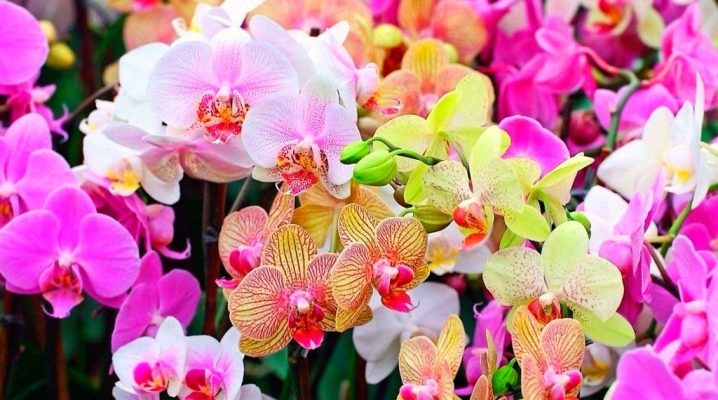
Drying of the flowering shoot on orchids often causes anxiety and concern for novice growers. In most cases, this process is natural, because the peduncle is just a temporary shoot on which flower buds are formed. This article will discuss what to do if the orchid's peduncle has dried up, why this happens, how to keep the broken arrow and how to properly cut the dried peduncle.
Flowering shoot: purpose and formation
The flowering arrow begins to form in orchids that leave the dormant phase and enter the stage of active development. At this stage, the plants are preparing for flowering, releasing a flowering shoot from the outlet. In the future, flower buds begin to form and bloom on this shoot.
After the orchid fades, its flowers crumble, and the peduncle dries up. As its natural withering away, the color and appearance of the shoot change. The initially green flowering arrow with the cessation of photosynthesis becomes brown, dark purple and even almost black. This indicates the termination of all biological processes in this part of the plant and that the peduncle has dried up, having completed its primary task and providing flower buds with nutrition and support.

Thus, if a long flowering arrow has withered on an orchid immediately after the natural wilting and dropping of flowers, this should not cause concern. However, if the peduncle began to dry and die simultaneously with the formation and development of buds, you should carefully read the reasons why this could happen.
The main factors affecting the premature drying of the flowering shoot:
- insufficient illumination;
- too frequent or too rare feeding;
- high or low air humidity;
- exposure to drafts, hypothermia of the plant;
- neglect of the general rules for the care and cultivation of orchids.
Let's take a closer look at each of the factors in order to accurately establish the cause and take the necessary measures in time.
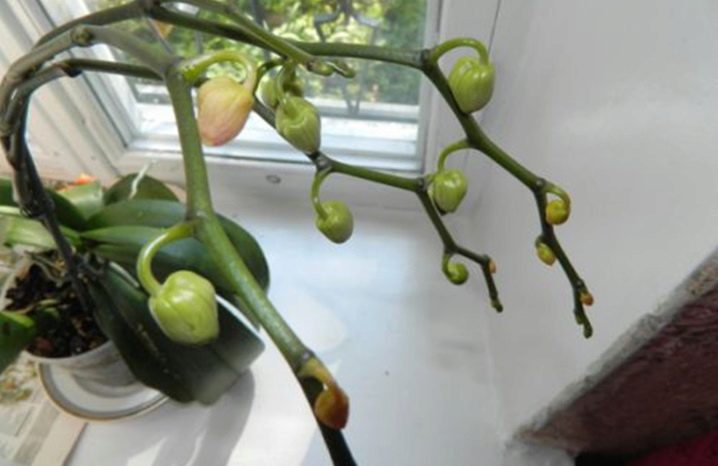
Insufficient illumination
One of the common reasons due to which the orchid peduncle dries up without any prerequisites is a lack of lighting. Orchids are tropical flowers that tolerate shade well, but at the same time suffer from a lack of light. Short daylight hours and a lack of light are the main reasons why these exotic plants do not bloom.
In conditions of a lack of light, orchids do not have enough resources to form full-fledged flower ovaries. Even if the plant has enough strength to form buds, poor illumination can lead to drying of the flowering shoot.
Too frequent or too rare feedings
Experienced growers know that in growing phalaenopsis, it is important to observe moderation in everything. Extremes should also be avoided when it comes to fertilizing, as both excess and lack of nutrients in the substrate can negatively affect the flowering of plants.
Overuse of top dressing can cause abundant formation of leaves and empty shoots in the outlet. It is noteworthy that in this case, against the background of intensive growth of green mass, the orchid may not bloom for years - this process is called “fattening” by flower growers. Often, fattening orchids still release flowering shoots, which subsequently die off.
Quite the opposite situation is associated with a deficiency of nutrients in the substrate, caused by rare and insufficient feeding. In such cases, the plant simply does not have enough strength to fully form the buds. As a result, it happens that the orchid, which nevertheless released a young flowering shoot, cannot bloom, and the flower stalk itself withers.
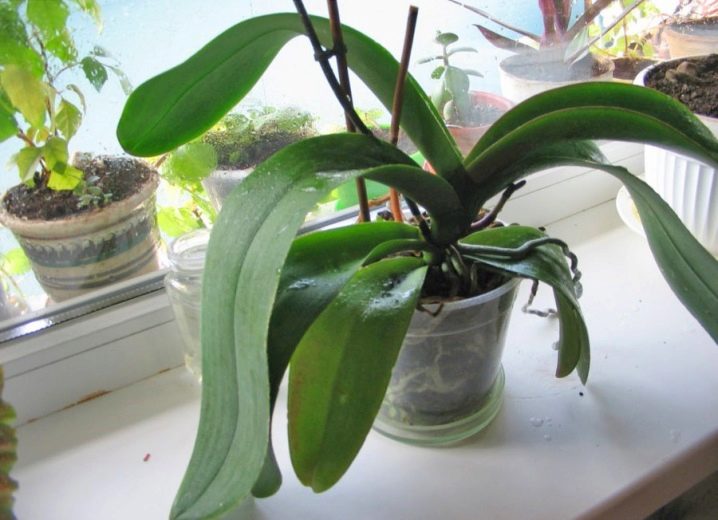
High or low air humidity
Drying of a flowering shoot can also occur as a result of a lack of moisture in the air. Excessively dry air leads to dehydration of the leaves, stems and peduncles of the plant, as a result of which they begin to dry out, curl and turn yellow.
High humidity is usually the cause not of drying, but of decay of the flowering shoot. To prevent this from happening, it is advisable to maintain the air humidity level within 30-40%.
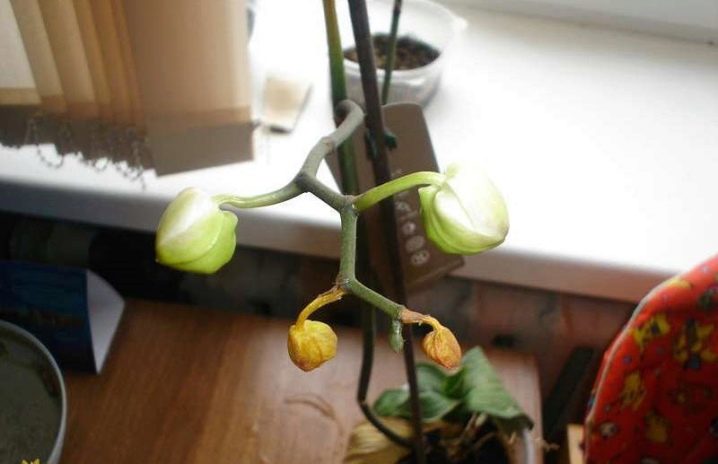
Drafts and hypothermia of the plant
The exotic origin of orchids is directly related to their heat-loving nature. These capricious plants tolerate drafts and temperature changes very painfully. Even a short-term drop in air temperature to 10 ° and below is very dangerous for them.
As a result of hypothermia, flowering shoots of an orchid, as well as forming buds, can seriously suffer and even die.
Therefore, it is extremely important during the ventilation of the premises to prevent hypothermia of exotics and exclude their stay in a draft.
Neglecting the rules of care and cultivation of orchids
This category should include all those factors that beginner growers usually face. The most common reason for the drying of the peduncle in these cases is the stress to which the plants are subjected to one degree or another. So, flower stalks on orchids can dry out due to careless transplantation, constant movement of pots from one place to another, careless handling of blooming exotics. All these manipulations are stressful factors for delicate orchids, as a result of which they can stop flowering and shed their buds.
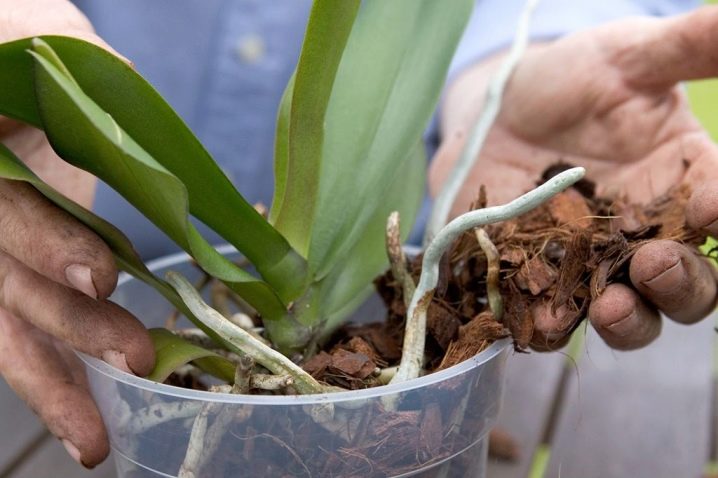
How to save a broken flower-bearing arrow?
A very unpleasant and painful situation is in which, for whatever reason, the flowering arrow of an orchid breaks. If a phalaenopsis has a broken peduncle, experienced plant breeders recommend carefully examining the intact part. If buds are present on it, then the chances that the plant will still bloom remain. Perhaps an orchid with a broken peduncle will not bloom very abundantly, but its luxurious butterfly flowers will still be able to please the owner.
To preserve the intact part of the peduncle, its fractured fragment should be cut off. It is necessary to cut off the shoot with sharp scissors - if possible in one confident movement. It is important to make sure that there is at least one flower bud on the part of the peduncle remaining in the outlet. After cutting the fractured fragment, sprinkle the cut site with crushed activated carbon or cinnamon to prevent shoot decay.
Some novice breeders try to keep the broken peduncle intact by holding the broken parts together. In most cases, these attempts do not lead to anything, and sometimes they can completely cause decay of the flowering shoot and the entire plant as a whole.
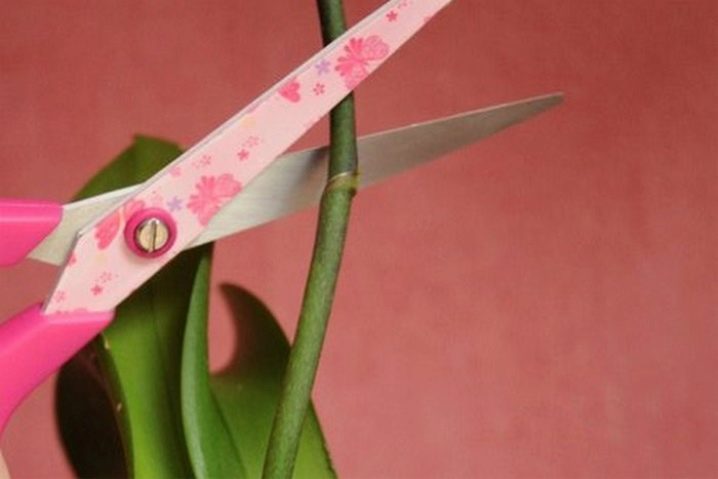
Rules for pruning a dried peduncle
Trying to preserve the flowering shoot, which has already begun to turn yellow in the lower part, is pointless. The yellowing of the stem base indicates that natural biological processes stop in the tissues of the plant and drying cannot be stopped.Pruning a dry peduncle is also done with sharp scissors, after which the dry cut is processed with charcoal powder.
Leaving dry, long-dead peduncles in the outlet is not worth it: they not only make the plant visually untidy, but can also become a breeding ground for bacteria and pests dangerous for orchids.
For information on how to cut a dried orchid flower stalk, see the following form































The comment was sent successfully.